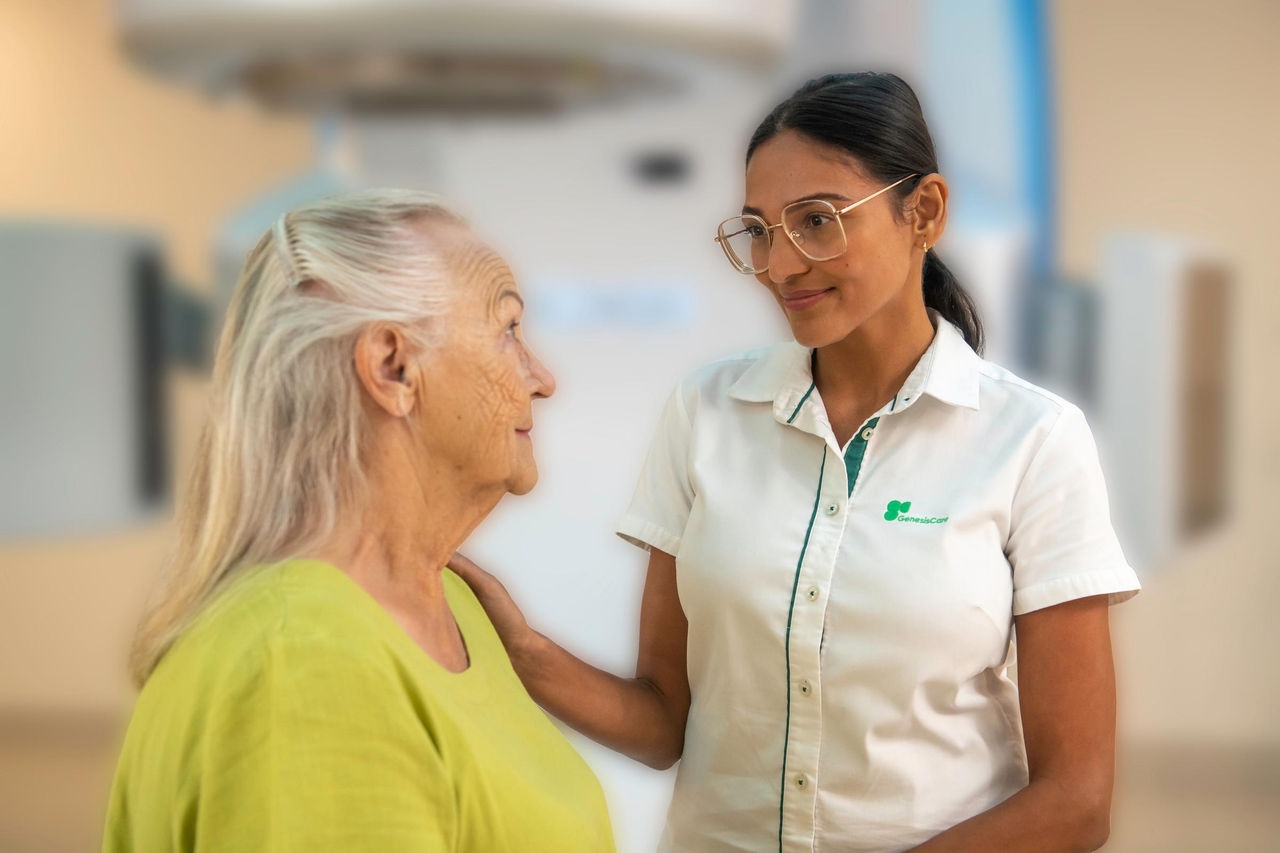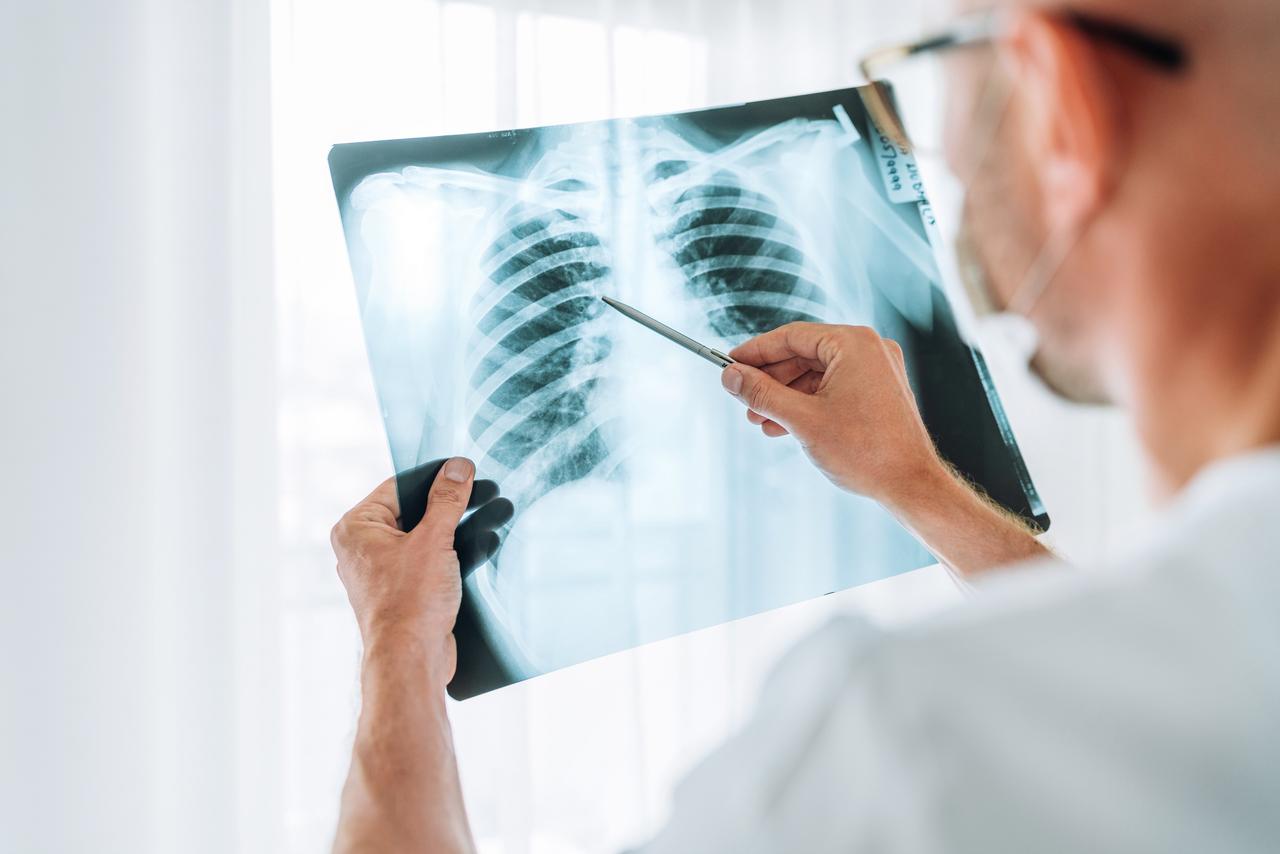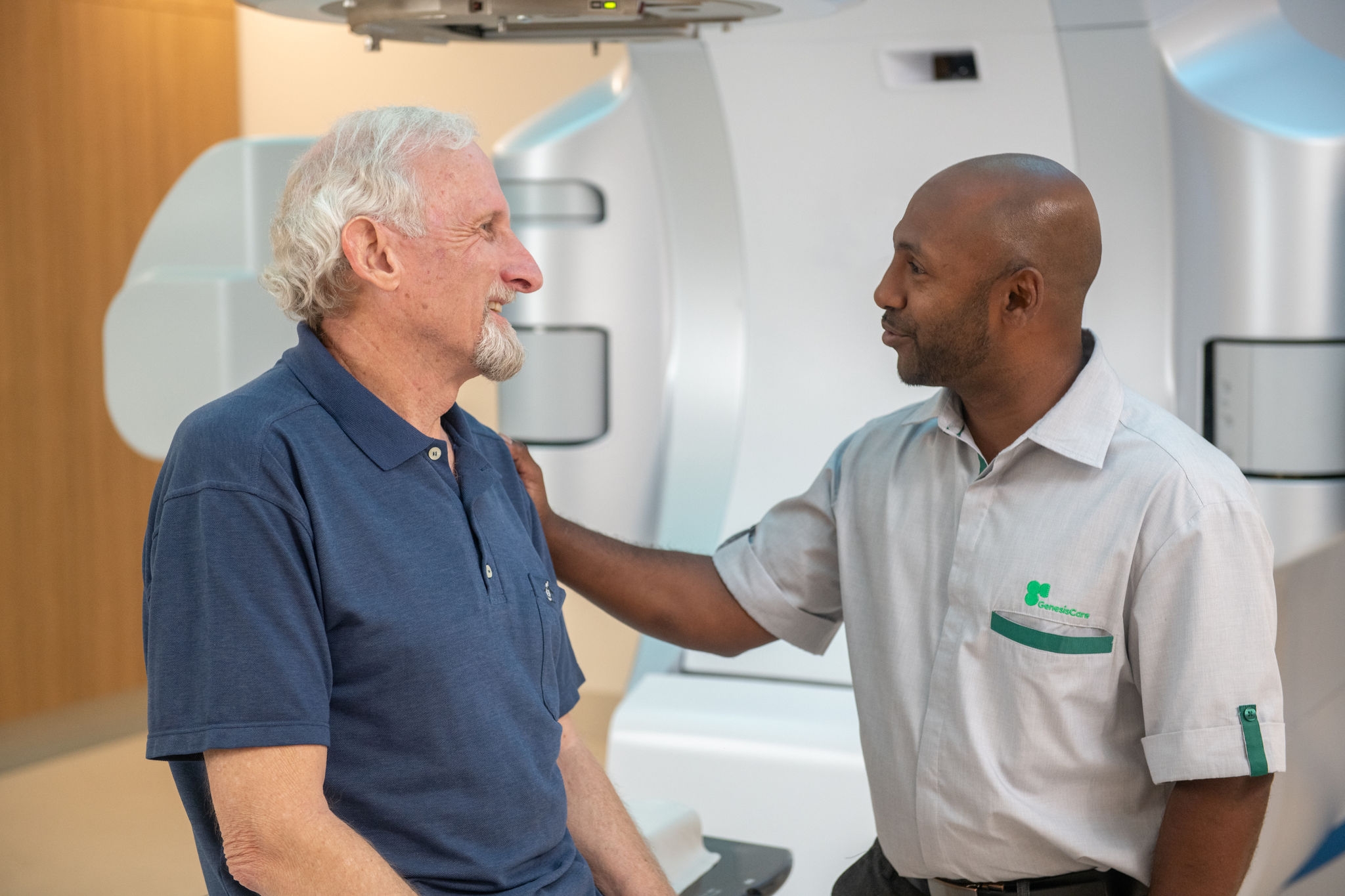Review Date: November 2025
- Patients
- Conditions we treat
- Lung cancer
What is lung cancer?
What is lung cancer?
Lung cancer is a cancerous tumour in the tissue of one or both of the lungs.1 It was the fifth most commonly diagnosed cancer in Australia in 2024 and remains the leading cause of cancer deaths. Around one in 20 people will be diagnosed with lung cancer by the age of 85.1,2
The lungs are the main organs for breathing and are part of the respiratory system, which includes the nose, mouth, windpipe, and airways (large airways, bronchi; smaller airways, bronchioles) in each lung.1
Primary lung cancer starts in the lungs and is divided into two main groups:1,3
1. Non-small cell lung cancer (NSCLC)
This is the most common type of lung cancer, accounting for about 85% of cases. It includes:1,3
- Adenocarcinoma – starts in the cells that make mucus in the outer part of the lungs
- Squamous cell carcinoma – mainly affects the cells that line the airways. It tends to grow in the centre of the lung and is linked to a history of smoking
- Large cell carcinoma (undifferentiated carcinoma) – where the cancer cells do not clearly belong to one of the two subtypes above
2. Small cell lung cancer (SCLC)
Approximately 15% of lung cancers are SCLC. SCLC tends to start in the middle of the lungs and usually spreads more quickly than NSCLC.1,3 It also responds more quickly to treatment.
Other types of lung cancer
- Secondary (metastatic) lung cancer starts somewhere else in the body and spreads to the lungs.1,3
- Mesothelioma is a rare type of cancer that affects the covering of the lungs, called the pleura. It is almost always caused by exposure to asbestos.1,3
- Chest wall cancer refers to cancers that start in the chest wall. These may affect the lungs but are not considered lung cancers.1,3
Sympotms of lung cancer may include:1,3
- Coughing up blood
- A new or changed cough that doesn’t go away
- Chest and/or shoulder pain or discomfort – which may worsen when coughing or breathing deeply
- Trouble breathing or shortness of breath
- Trouble swallowing
- Hoarse voice
- Weight loss
- Loss of appetite
- Chest infection that doesn’t go away
- Tiredness or weakness2
If you experience any of these symptoms and they persist, it is recommended that you make an appointment with your GP.
There are a range of factors that may increase the risk of developing lung cancer. These risk factors include:1,3
- Increasing age
- Tobacco smoking – current or former
- Exposure to second-hand smoke (also known as passive smoking)
- Occupational substance exposure, which may include asbestos, silica, diesel exhaust, arsenic, cadmium, nickel, soot, and radon
- Family history of lung cancer
- Infection with HIV
- Past chronic lung disease, including for example chronic obstructive pulmonary disease and pulmonary fibrosis
- History of cancer including lung, head and neck cancers
It’s important to note that having one or more of these risk factors does not necessarily mean that you will develop lung cancer.¹,³ If you are concerned about your risk, it is recommended that you speak with your GP or specialist.

Make an enquiry
Contact us today to find out how GenesisCare can help you.
Diagnosis
Diagnosing lung cancer
A range of tests may be performed to assess symptoms and diagnose lung cancer, as well as to determine its type and stage. Following a physical examination, further tests may include:¹,³
- Imaging tests: such as a chest X-ray, computed tomography (CT) scan, positron emission tomography (PET) scan, or magnetic resonance imaging (MRI) scan. The purpose of imaging tests is to understand more about the size, location, and possible spread of the tumour.
- Blood or tissue laboratory tests
- Lung biopsy: involves removing a small sample of tissue or fluid to be examined under a microscope
- Sputum cytology: a sample of sputum (mucus coughed up from the lungs) is examined under a microscope
- Bronchoscopy: a thin tube is inserted via the nose or mouth to view the inside of the trachea and large airways in the lungs. Samples may be taken through washings, brushing, or biopsy
Lung cancer can be classified by stage, which describes the size of the tumour and whether it has spread to lymph nodes or other parts of the body. Two systems may be used:1,3
1. TNM system (Tumour–Nodes–Metastasis)
- Tumour (T): describes the size of the tumour and how far it has grown into the lung or nearby structures
- Nodes (N): indicates whether the cancer has spread to nearby lymph nodes
- Metastasis (M): shows whether the cancer has spread to other parts of the body
2. Two-stage system for small cell lung cancer (SCLC)
- Limited stage: cancer is on one side of the chest and in one part of the lung, with only nearby lymph nodes affected (if any)
- Extensive stage: cancer is present throughout the lung or has spread to the other lung, lymph nodes on the opposite side of the chest, or other parts of the body
Note: the TNM system may also be applied to small cell lung cancer in some cases.

Screening for lung cancer
A National Lung Cancer Screening Program commenced in July 2025. It targets people at high risk, aiming to detect lung cancer in its early stages, increase the chances of successful treatment, and improve overall outcomes.4
Learn more about the National Lung Cancer Screening Program, on our blog: Understanding more about the National Lung Cancer Screening Program.
Find a doctor
Search for Lung Cancer specialists in your state.
Treatment options
Lung cancer treatment options
Your treating doctor will discuss the most appropriate treatment option(s) with you. The options recommended may depend on the stage and type of cancer, your overall health, the severity of symptoms, and your personal preferences.1
Radiation therapy uses high energy X-rays or other particles to treat cancer and can be used at all stages.6
Chemotherapy is an approach to cancer therapy which involves the administration of medicine, usually orally or by injection, which is intended to kill cancer cells or minimise their growth and spread. Chemotherapy can be used in conjunction with other cancer treatments.7
Early-stage non-small cell lung cancer may be treated by surgery, with the aim being to remove the tumour. Generally, surgery isn’t recommended for the treatment of small cell lung cancer.1
Targeted therapy refers to treatment with drugs that are designed to specifically attack cancer cells without harming normal cells. These types of drugs affect the way that cancer cells grow, divide, repair themselves or interact with other cells.2
Immunotherapy is a type of treatment that is intended to help your own immune system fight cancer. There are different types of immunotherapy for cancer that work in different ways.2

All cancer treatments may have side effects. The type and severity of side effects will vary between individuals.1-3
You can ask your doctor for detailed information about the side effects which you may experience with any treatment recommended for you.
Find a centre
Contact us today to find out how GenesisCare can help you.
Support services
Support services
Content reviewed by

- Cancer Council Australia. (2022, July). Understanding lung cancer (6th ed.). Cancer Council Australia. Retrieved October 2025, from https://www.cancer.org.au/assets/pdf/understanding-lung-cancer-booklet
- Cancer Council Australia. (n.d.). Early detection of lung cancer. Cancer Council Australia. Retrieved October 2025, from https://www.cancer.org.au/about-us/policy-and-advocacy/early-detection/lung-cancer
- Cancer Australia. (2025, October 28). Lung cancer. Australian Government. Retrieved October 2025, from https://www.canceraustralia.gov.au/cancer-types/lung-cancer
- Australian Government Department of Health and Aged Care. (n.d.). National Lung Cancer Screening Program. Retrieved October 2025, from https://www.health.gov.au/our-work/nlcsp/about

You are leaving our website
You are now leaving our website. GenesisCare do not control this content and therefore are not responsible for its accuracy or reliability.

You are leaving our website
You are now leaving our website. GenesisCare do not control this content and therefore are not responsible for its accuracy or reliability.

You are leaving our website
You are now leaving our website. GenesisCare do not control this content and therefore are not responsible for its accuracy or reliability.
Disclaimer:
This website is provided for information purposes only. Nothing on this website is intended to be used as medical advice, or to diagnose, treat, cure or prevent any disease. It should not be used as a substitute for your own health professional's advice. Any medical procedure or treatment carries risks. Before proceeding with treatment, you should discuss the risks and benefits of the treatment with an appropriately qualified health practitioner. Individual treatment outcomes and experiences will vary.



